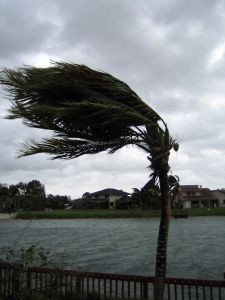 Floods, hurricanes, rampaging forest fires, terrorist attacks - the list of disasters with the potential to affect small businesses is depressingly long.
Floods, hurricanes, rampaging forest fires, terrorist attacks - the list of disasters with the potential to affect small businesses is depressingly long.
Disaster of course may never strike, but when it comes to your small business, it’s much better to do some disaster planning ahead of time.
So says Karen Klein, a contributor to BloombergBusinessweek. Disasters can immobilize a business or shut it down. To emphasize her point, she quotes Bob Boyd, president and chief executive of Agility Recovery: “Your customers will never come back to you if your business fails them. But everyone will come to you - and they’ll never leave - if you prove your business to be successful and trustworthy.”
Here are a few steps to take in advance of an unforeseen accident or disaster (natural or man-made):
Six Steps for Disaster Planning
Don’t Get Paralyzed Ahead of Time
It’s easy to get discouraged by the perception that disaster planning will be expensive and time-consuming. Boyd advises taking small steps in planning: “Don’t get paralyzed by worrying about big solutions that are expensive when it’s easy to knock off the low-hanging fruit.”
Visit the SBA’s disaster planning site. Begin thinking about the three major problems that can cripple your business: loss of power, loss of communications, and loss of property.
Plan For a Loss of Power
Klein advises talking to an electrician about the type of generator that will best power your business in the event of an emergency (and how to get one).
Plan to Keep Communications Going
Keep in mind that if power goes down, your electronic devices may also fail and leave you without vital employee contact information. Says Boyd: “Make sure your employees know how to reach you and how you’ll communicate with them … whether it’s on Facebook, Twitter, or through text messages."
Keep a printed document containing key phone numbers, bank account and credit-card numbers, as well as other information needed to maintain business operations. Update this information on a regular basis, place hard copies in different locations “and make sure your staff knows where they are located.”
Find a Place to Keep Working
What if your workplace is flattened by an earthquake or flooded after a hurricane? “Think through where you’re going to go, and don’t just rely on a work-from-home strategy,” Boyd advises. “If your office is dark and unconnected, your home may be also.”
Decide on one or two remote settings where the business can relocate to on a temporary basis - “perhaps setting up a reciprocal arrangement with a business or a friend in another city."
Stock up on Basic Supplies
Having an emergency preparedness kit on hand is always a good idea, but putting some basis supplies in an old duffel bag may be just as helpful. Such supplies might include:
- A crank-powered radio
- Flashlights
- Cell-phone chargers
- Heavy-duty extension cords
- Emergency water
- Mylar blankets and inexpensive ponchos
- Emergency food, “such as high-calorie energy bars with long shelf-lives”
Prepare Your Employees
Every business should designate a disaster preparedness point person or team to be in charge of planning efforts. The team is responsible for setting up areas where employees can meet both in and outside the building; keeping an up-to-date list of employees in order to account for everyone after a disaster; displaying emergency contact information in a central location; and encouraging staff enrollment in first aid and CPR classes.
As Boyd says, “If you can take phone calls and keep production going [after a disaster strikes], you’ll be light years ahead of your competitors.”
What kind of disaster planning might you do for your business?
